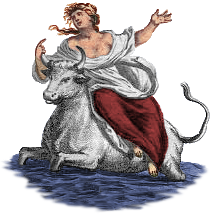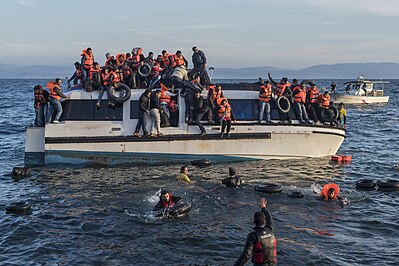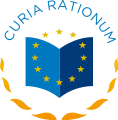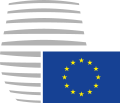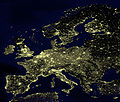Portal:European Union
Introduction
The European Union (EU) is a supranational political and economic union of 27 member states that are located primarily in Europe. The Union has a total area of 4,233,255 km2 (1,634,469 sq mi) and an estimated total population of over 449 million. The EU has often been described as a sui generis political entity combining the characteristics of both a federation and a confederation. Containing 5.8% of the world population in 2020, EU member states generated a nominal gross domestic product (GDP) of around US$16.6 trillion in 2022, constituting approximately one sixth of global nominal GDP. Additionally, all EU states except Bulgaria have a very high Human Development Index according to the United Nations Development Programme. Its cornerstone, the Customs Union, paved the way to establishing an internal single market based on standardised legal framework and legislation that applies in all member states in those matters, and only those matters, where the states have agreed to act as one. EU policies aim to ensure the free movement of people, goods, services and capital within the internal market; enact legislation in justice and home affairs; and maintain common policies on trade, agriculture, fisheries and regional development. Passport controls have been abolished for travel within the Schengen Area. The eurozone is a group composed of the 20 EU member states that have fully implemented the economic and monetary union and use the euro currency. Through the Common Foreign and Security Policy, the union has developed a role in external relations and defence. It maintains permanent diplomatic missions throughout the world and represents itself at the United Nations, the World Trade Organization, the G7 and the G20. Due to its global influence, the European Union has been described by some scholars as an emerging superpower. In 2012, the EU was awarded the Nobel Peace Prize. The United Kingdom became the only member state to leave the EU, in 2020; ten countries are aspiring or negotiating to join it. (Full article...) Selected article Same-sex marriage in Spain was legalised in 2005. In 2004, the new Socialist government, led by President José Luis Rodríguez Zapatero, began a campaign for its legalization, which would include adoption by same-sex couples. After much debate, a law permitting same-sex marriage was passed by the Cortes Generales on 30 June 2005 and published on 2 July 2005. Same-sex marriage officially became legal in Spain on Sunday, 3 July 2005. The ratification of this law has not been devoid of conflict, despite support from 66% of Spaniards. Catholic authorities in particular were adamantly opposed to it, fearing the weakening of the meaning of marriage. Demonstrations for and against the law drew thousands of people from all parts of Spain. Approximately 4,500 same-sex couples have married in Spain during the first year of the law. Shortly after the law was passed, questions arose about the legal status of marriage to non-Spaniards whose country did not permit same-sex marriage. A ruling from the Spanish Justice ministry stated that the country's same-sex marriage law allows a Spanish citizen to marry a non-Spaniard regardless of whether that person's homeland recognizes the partnership. At least one partner must be a Spanish citizen to marry. Selected picturePhotograph credit: Georgios Giannopoulos The European migrant crisis, also known as the refugee crisis, is a period beginning in 2015 characterised by high numbers of people arriving in the European Union from across the Mediterranean Sea or overland through Southeast Europe following Turkey's migrant crisis. It is part of a pattern of increased immigration to Europe from other continents, which began in the mid-20th century and which has encountered resistance in many European countries.
This picture shows Syrian and Iraqi refugees disembarking a boat upon reaching the coastal waters of the island of Lesbos, Greece, after having crossed the Mytilini Strait from Turkey. They are being assisted by volunteer lifeguards, in yellow and red clothes, from Proactiva Open Arms, a Spanish non-governmental organisation.
Did you know?...that France possesses the largest exclusive economic zone (EEZ) in the world? ...that Monaco, San Marino, and Vatican City all mint their own euro coins, with their own national symbols on the back? ...that Turkey's two most famous weightlifters, Naim Suleymanoglu and Halil Mutlu are only two of four weightlifters in the world to have won 3 gold medals in 3 olympics? Selected cityThe city of Luxembourg, commonly known as Luxembourg City, is a commune with city status, and the capital of the Grand Duchy of Luxembourg. It is located at the confluence of the Alzette and Pétrusse rivers in southern Luxembourg As of 2005[update], the commune of Luxembourg City has a population of 76,420, which is almost three times the population of the second most populous commune. The city's metropolitan population, including that of surrounding communes of Hesperange, Sandweiler, Strassen, and Walferdange, is 103,973. Luxembourg City lies at the heart of Western Europe, situated 188 km (117 miles) from Brussels, 289 km (179 miles) from Paris, 190 km (118 miles) from Cologne. Luxembourg City is one of the wealthiest cities in the world, having developed into a banking and administrative centre. Luxembourg is a seat of several institutions of the European Union, including the European Court of Justice, the European Court of Auditors, and the European Investment Bank. General imagesThe following are images from various European Union-related articles on Wikipedia.
TopicsFeatured contentFeatured articles
Featured lists
Featured contentGood articles
CategoriesRelated portalsAssociated WikimediaThe following Wikimedia Foundation sister projects provide more on this subject:
Discover Wikipedia using portals |



